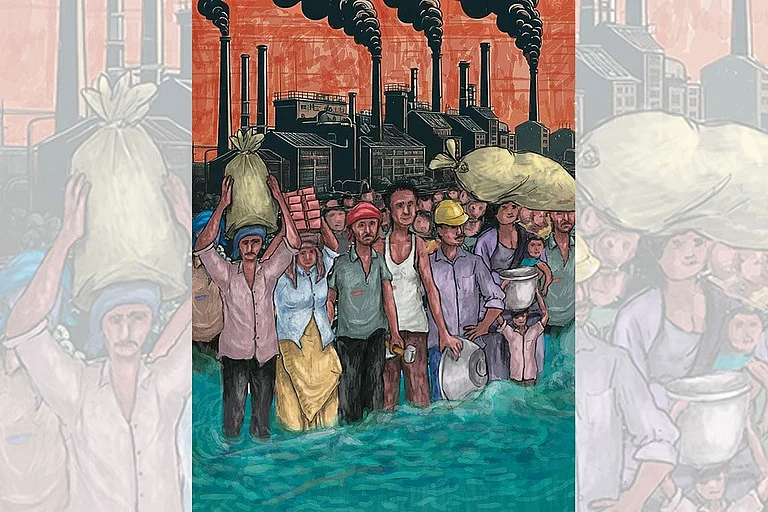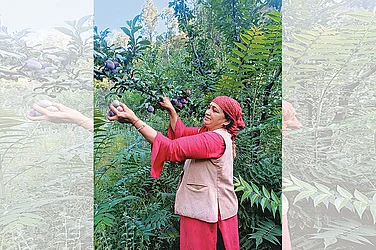As firefighters race to contain the spreading wildfires around Los Angeles and evacuation warnings leave homeowners on edge, the crisis has reignited debates on climate change, displacement, and the growing phenomenon of climate migrants. The International Organisation for Migration defines climate migrants as people moving due to 바카라úsudden or progressive change in the environment due to climate change바카라Ě, by choice or compulsion, 바카라úwithin a state or across an international border바카라Ě.
For years, sudden disasters like hurricanes, cyclones, tsunamis, and droughts have upended lives, and forced migration. Displaced people often have no choice but to seek refuge in rural areas, overcrowded camps, or informal settlements with limited access to basic amenities or infrastructure. Without any organised attempt to monitor this migrant population, these desperate individuals end up wherever they can, not necessarily where they should.
Are Climate Migrants Refugees?
Although climate migration is now widespread, there are no regional or global legal frameworks to protect these migrants. While the term 바카라úclimate refugees바카라Ě is increasingly used in media and advocacy, these individuals are not legally considered refugees.
The term 'refugee' is legally defined and refers to individuals who have a "well-founded fear of persecution based on race, religion, nationality, membership in a particular social group, or political opinion" (Art. 1, 1951 Refugee Convention). The convention does not recognise environmental factors as a basis for persecution.
This means that states are not legally obligated to admit climate migrants as asylum seekers. Many are forced to return to their home countries, where they remain in perilous conditions under the constant threat of disaster.
Regions Most Vulnerable To Climate Migration
Latin America, South Asia, and sub-Saharan Africa are among the regions most vulnerable to the effects of climate change, which could lead to large increases in both internal and cross-border migration. More than half of the developing world바카라ôs population resides in these three regions.
By 2050, the World Bank바카라ôs Groundswell report estimates that up to 216 million people across six global regions could be displaced internally due to slow-onset climate impacts such as water scarcity, reduced crop productivity, and rising sea levels. Regionally, this includes 86 million people in sub-Saharan Africa, 49 million in East Asia and the Pacific, 40 million in South Asia, 19 million in North Africa, 17 million in Latin America, and 5 million in Eastern Europe and Central Asia.
There are no accurate estimates of how many people are currently moving, or will move, due to environmental factors. Much of the climate-induced migration occurs within countries바카라Ēsuch as from rural to urban areas바카라Ēand is often undocumented. Cross-border migration linked to natural disasters and slower-moving climate impacts is harder to measure but is expected to increase, particularly for those living near borders.
In April 2021, the United Nations High Commissioner for Refugees (UNHCR) released data indicating that 21.5 million people have been displaced by climate change-related disasters since 2010, noting that 바카라úin addition to sudden disasters, climate change is a complex cause of food and water shortages, as well as difficulties in accessing natural resources.바카라Ě
Ironically, countries with the lowest emissions are often geographically vulnerable to climate change, such as deserts and low-lying islands. Those who bear the least responsibility for climate change are the most vulnerable to its consequences.
According to a report from Oxfam and the Stockholm Environment Institute, people with the top 1 percent highest incomes globally바카라Ēa group of about 63 million바카라Ēemitted twice the amount of carbon emissions between 1990 and 2015 compared to the bottom 50 percent, which includes 3.1 billion people.
Who Will Protect Climate Migrants?
Some experts advocate for granting climate migrants the same legal status as refugees. They argue that such a designation would expand protections, including access to legal services and planned relocation. It would also signal a commitment from wealthier countries바카라Ēthose most responsible for greenhouse gas emissions바카라Ēthat aiding those harmed by climate change is a global responsibility.
However, other experts caution that expanding the 1951 Refugee Convention could weaken the refugee status, which would be unfortunate considering the current state of our globe, where so many people require protection due to persecution and ongoing conflicts.
Alternatively, some suggest establishing a new agreement to address the specific rights and needs of climate migrants. Yet, experts believe that achieving such a framework in the near future is unlikely, given differences over how to define climate migrants, the larger argument over how to manage climate change, and the erosion of refugee rights in general.

















